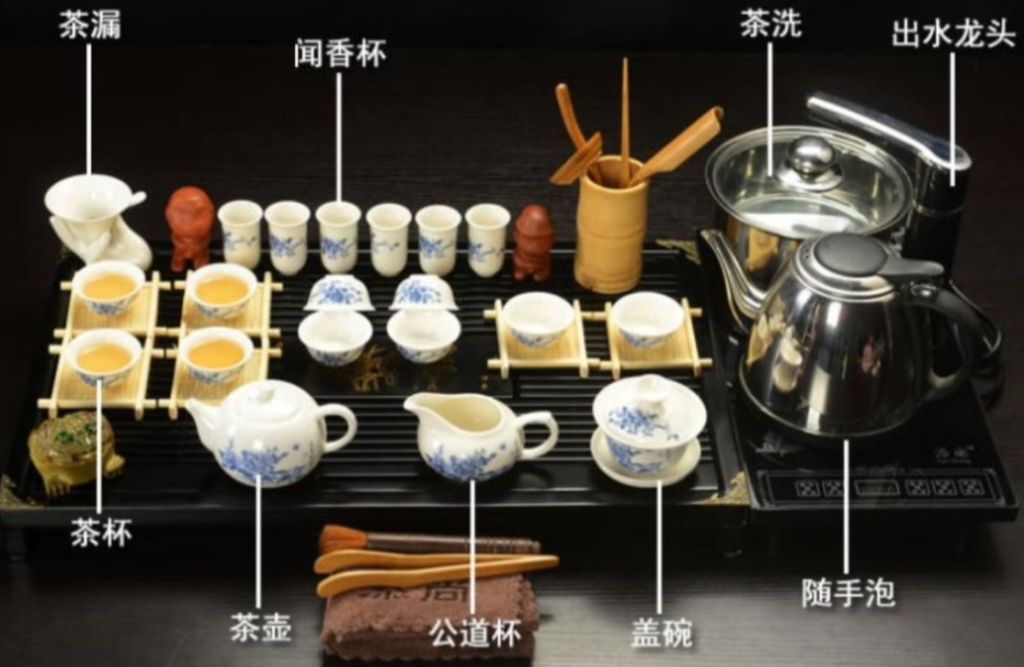Just as fish cannot live without water, no matter how good the tea is, without a set of fine tea utensils, it cannot fully express its flavor and aroma. A complete set of tea utensils consists of multiple components, each with its unique function. Below, we will introduce each piece of tea utensil one by one, so you can learn all the names of tea utensils at once and never need to look elsewhere.
I. Names of Each Component of Tea Utensils
Books on Tea Culture: Introductions to tea culture and tea art. Tea Art Training Institutions: Organizations offering tea art training, tasting, and performance services. The Six Gentlemen of Tea: Tea scoop, tea needle, tea strainer, tea tongs, tea spoon, and tea caddy. Drinking Tea: Commonly refers to tea consumption, with regional variations in terminology. Tea Music: Typically refers to music played during tea drinking, such as compositions by Wu Na and Zhao Zheng.
Portable Tea Utensils: Quick Brew Cup: A portable tea set, one-to-three, suitable for quick tea brewing. Drifting Cup: A manual tea strainer cup, portable tea set. Automatic Tea Brewer: A machine for automatic tea brewing, suitable for office or outdoor use. Materials and Advantages of Tea Utensils: Porcelain: Porcelain tea sets have an elegant color, good insulation, and can well preserve the aroma and taste of tea. Purple Sand: Purple sand tea sets have good breathability, making the tea soup more mellow, suitable for brewing oolong tea, Pu’er tea, etc. Glass: Glass tea sets have high transparency, facilitating the observation of tea leaves in water, suitable for brewing green tea, black tea, etc. Stainless Steel: Stainless steel tea sets are durable and rust-resistant, suitable for outdoor or office use, easy to clean. Bamboo: Bamboo tea sets have good thermal conductivity, suitable for brewing various types of tea, with a unique natural flavor. Wooden: Wooden tea sets have good insulation, comfortable to the touch, adding to the pleasure of tea tasting, suitable for brewing Pu’er tea, dark tea, etc. Silver: Silver tea sets have excellent thermal conductivity and antibacterial properties, enhancing the quality of tea soup, suitable for high-end tea art performances. Plastic: Plastic tea sets are lightweight and affordable, suitable for daily use, especially for outdoor activities. Summary: Tea utensils come in various materials and shapes, each suitable for different scenarios and personal preferences. When choosing tea utensils, consider not only personal taste but also the characteristics of the tea. Good tea utensils may better showcase the authentic taste of tea and make it easier to brew a good cup of tea. As the saying goes, ‘To do a job well, one must first sharpen one’s tools.’


